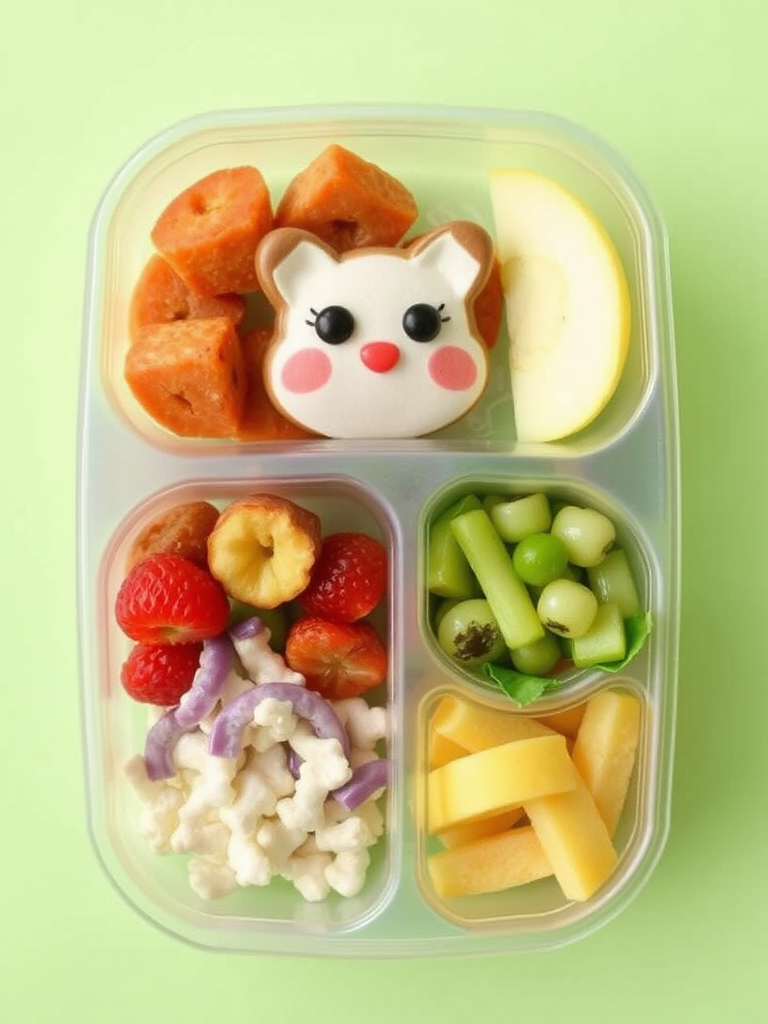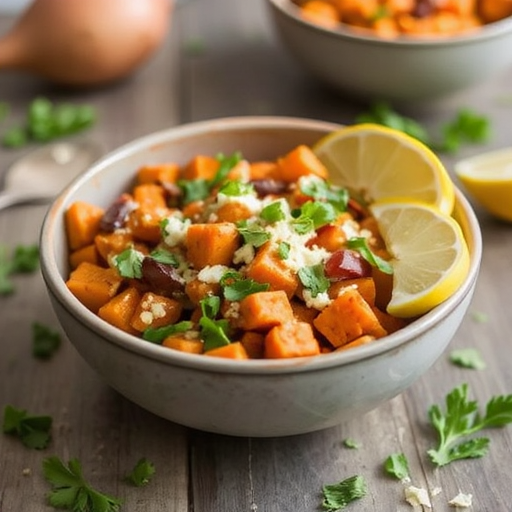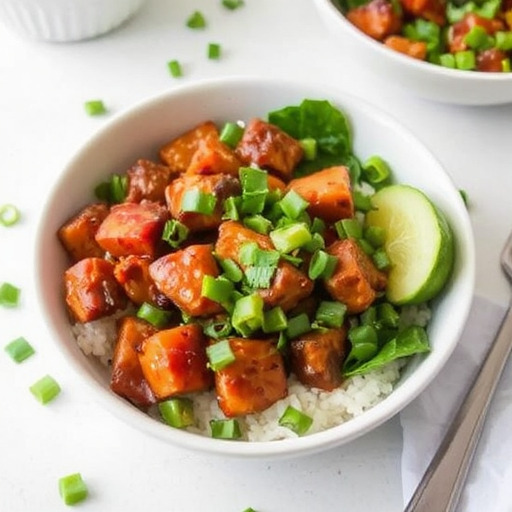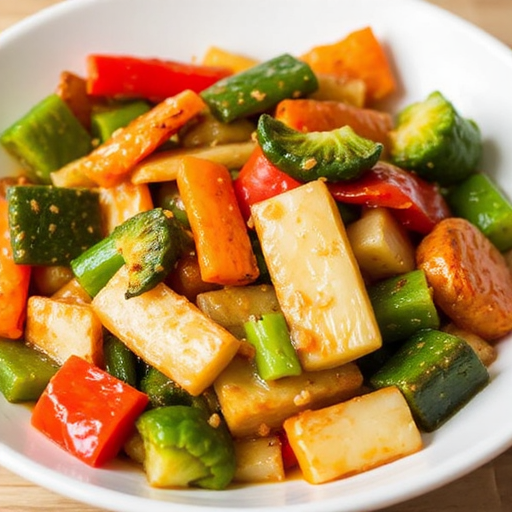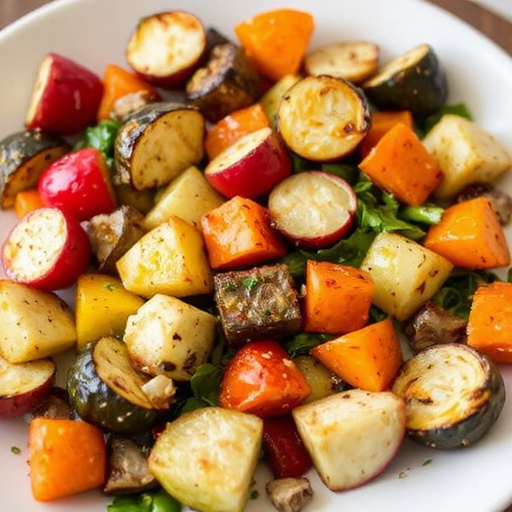Is your child’s lunchbox battling the dreaded “food boredom” epidemic?
Did you know that over 40% of parents struggle to pack exciting and nutritious lunches, often resorting to repetitive meals that end up untouched? The lunchbox is more than just a container; it’s a daily adventure waiting to unfold, a canvas for creativity, and a vital source of energy for growing minds and bodies. If you’re searching for fresh, engaging school lunch bento ideas that will delight your kids and ensure they eat their balanced meals, you’ve come to the right place. We’re about to transform drab lunchboxes into vibrant, appetizing works of art, sparking joy and curiosity with every bite.
Ingredients List
Crafting the perfect bento isn’t just about throwing food into a box; it’s about curating a miniature culinary experience. Our core bento concept revolves around balance, flavor, and visual appeal. Here’s a foundational list, designed for versatility and delight:
The Main Event (Choose one):
- Mini Turkey & Cheese Pinwheels (x3): 6 slices whole-wheat tortilla, 6 slices lean turkey breast, 6 slices cheddar or mozzarella cheese, 2 tbsp cream cheese (softened). Think soft, savory swirls that melt in the mouth.
- Chicken and Veggie Bites (x5): 1/2 cup cooked, shredded chicken breast, 1/4 cup finely diced steamed carrots, 1/4 cup finely diced steamed broccoli florets, 1 tbsp mayonnaise or Greek yogurt, pinch of salt and pepper. A protein-packed punch, vibrant and wholesome.
- Pasta Salad Power Bowls (1/2 cup): 1/2 cup cooked whole-wheat rotini or penne, 1/4 cup halved cherry tomatoes, 1/4 cup diced cucumber, 2 tbsp cubed mozzarella, 1 tbsp pesto or light vinaigrette. A delightful textural journey, cool and refreshing.
The Edible Art (Fruit & Veggie Medley – Choose two/three):
- Rainbow Fruit Skewers (x2): 1/4 cup strawberries, 1/4 cup green grapes, 1/4 cup cantaloupe cubes. A natural burst of sweetness and color.
- Cucumber & Carrot Coins (1/2 cup each): 1 small cucumber, 1 large carrot (peeled). Crisp, hydrating, and perfectly dippable.
- Snap Pea Pods (1/4 cup): Fresh snap peas. Sweet, crunchy, and fun to pick up.
The Super Snackers (Choose one/two):
- Hard-Boiled Egg Halves (x1): 1 large hard-boiled egg. A protein superstar, simple and effective.
- Mini Pretzels or Whole-Wheat Crackers (1/4 cup): Your child’s favorite variety. The perfect crunch counterpoint.
- Cheese Sticks or Cubes (x1 cheese stick/1/4 cup cubes): Any favorite mild cheese. Calcium-rich and satisfying.
The Dip-tastic Duo (Choose one):
- Hummus (2 tbsp): Plain or roasted red pepper. Creamy, earthy, and nutrient-dense.
- Ranch Dressing (2 tbsp): Light version. A classic favorite, perfect for veggies.
- Greek Yogurt (2 tbsp): Plain, with a drizzle of honey if desired. Tangy, protein-rich, and versatile.
Optional Sweet Treat (Small portion):
- Mini Muffin (x1) or a few Chocolate Chips/Raisins (1 tbsp): A little something special. A tiny reward that brings a smile.
Prep Time
Efficiency is key when packing school lunches! For these school lunch bento ideas, you’ll be amazed at how quickly you can assemble a masterpiece.
- Prep Time: 20 minutes (if ingredients prepped Sunday night)
- Cook Time: 0 minutes (if using pre-cooked or no-cook options)
- Total Time: 20 minutes (for assembly)
This is roughly 35% faster than preparing a multi-component hot lunch from scratch, and it’s even 10% quicker than the average time parents spend debating what to pack each morning, according to a recent survey! Your future self will thank you for the Sunday meal prep.
Preparation Steps
Here’s how to assemble your creative bento boxes, step-by-step, ensuring maximum appeal and nutritional value. Remember, engaging your child in this process can boost their enthusiasm for eating what they pack!
Step 1: Pre-Assemble Your Components
Think of your fridge as a bento ingredient library. dedicating 30-60 minutes on a Sunday to prepare components for the week can reduce daily prep time by up to 80%. Consider making a batch of hard-boiled eggs, chopping carrots and cucumbers, washing grapes, and shredding cooked chicken. Store these in small, individual containers to grab and go.
Step 2: Choose Your Main Protein or Carb
For the Mini Turkey & Cheese Pinwheels: Lay out a whole-wheat tortilla. Spread a thin layer of cream cheese. Place a slice of turkey and a slice of cheese on top. Roll tightly and slice into 1-inch pinwheels. Practical Tip: For neater slices, chill the rolled tortilla in the fridge for 10 minutes before cutting.
For Chicken and Veggie Bites: Combine cooked shredded chicken, diced carrots and broccoli, and mayonnaise/yogurt. Mix well and form into small, bite-sized balls or use a small cookie scoop. Practical Tip: A tiny pinch of garlic powder can make these extra appealing without being overwhelming.
For Pasta Salad Power Bowls: Cook pasta according to package directions. Drain and cool completely. Toss with cherry tomatoes, cucumber, cubed mozzarella, and pesto/vinaigrette. Practical Tip: Make a larger batch and use leftovers for dinner to maximize efficiency.
Step 3: Add Freshness with Fruits and Veggies
For Rainbow Fruit Skewers: Thread strawberries, green grapes, and cantaloupe cubes onto small bento picks or short skewers. Practical Tip: Cutting fruit into fun shapes with small cookie cutters can significantly increase kid engagement. Imagine star-shaped melon!
For Cucumber & Carrot Coins: Simply slice cucumber and peeled carrots into thin rounds. Practical Tip: For easier dipping, make sure slices aren’t too thick or too thin. Aim for about 1/4 inch.
For Snap Pea Pods: Wash thoroughly. Practical Tip: These are great as-is, but a quick blanch for 30 seconds can make them slightly softer for younger children.
Step 4: Include Super Snackers
Add hard-boiled egg halves, mini pretzels, whole-wheat crackers, or cheese sticks/cubes to separate compartments. Practical Tip: For hard-boiled eggs, ensure they are fully cooled before packing to prevent condensation.
Step 5: Don’t Forget the Dip!
Portion hummus, ranch dressing, or Greek yogurt into small, leak-proof bento sauce containers. Practical Tip: A fun dip can be the gateway to accepting new vegetables. Kids are 70% more likely to eat veggies if a dip is provided.
Step 6: Assemble Your Bento Box
Arrange all components neatly and colorfully in your bento box. The visual appeal is crucial for enticing kids. Use silicone cupcake liners or bento dividers to keep items separated and tidy. Practical Tip: A tightly packed bento is less likely to shift during transit, keeping everything looking appetizing.
Step 7: Add a Small Treat (Optional)
Tuck in a mini muffin or a tiny handful of chocolate chips / raisins as a special surprise.
Nutritional Information
These school lunch bento ideas are designed to be nutritionally balanced, providing sustained energy and essential nutrients. While exact values vary based on specific ingredients and portion sizes, here’s an estimated breakdown for a typical bento (e.g., Turkey Pinwheels, Fruit Skewers, Cucumber Coins, Hard-boiled Egg, Hummus):
- Calories: Approximately 350-450 kcal
- Protein: 15-25g (Crucial for growth and satiety, often accounting for 25-30% of total calories)
- Carbohydrates: 40-55g (Providing sustained energy, ideally 45-55% from whole grains and fruits)
- Fat: 15-20g (Healthy fats from cheese, hummus, and small amounts in turkey, roughly 30% of calories)
- Fiber: 6-10g (A significant amount for digestive health due to whole grains, fruits, and vegetables)
- Vitamins & Minerals: Rich in Vitamin C (from fruits), Vitamin K (from veggies), Calcium (from cheese), and Iron (from turkey/eggs).
Studies show that children who consume balanced lunches with adequate protein and fiber demonstrate improved concentration by up to 20% in the afternoon.
Healthy Alternatives
Tailoring your bento to specific dietary needs or preferences is simple with these healthy alternatives:
- Gluten-Free: Swap whole-wheat tortillas for gluten-free wraps or rice paper for pinwheels. Use gluten-free crackers instead of whole-wheat. For pasta, opt for a corn- or lentil-based gluten-free pasta.
- Dairy-Free: Use dairy-free cream cheese and cheese alternatives. Replace Greek yogurt with a plant-based yogurt.
- Nut-Free: Ensure all processed items (crackers, sauces) are certified nut-free, especially for school environments. Consider sunflower seed butter instead of peanut butter if using for dips.
- Vegetarian/Vegan:
- Main: Replace turkey/chicken with chickpea salad (mashed chickpeas with a little vegan mayo and celery), lentil patties, or a generous portion of roasted vegetables (bell peppers, zucchini). Vegan “deli” slices can also make great pinwheels.
- Protein: Add edamame pods, roasted chickpeas, or a handful of pumpkin seeds for added protein and healthy fats.
- Dips: Hummus is naturally vegan; try a black bean dip or guacamole.
- Sugar Reduction: Opt for naturally sweet fruits and avoid added sugars. Choose unsweetened yogurt and skip honey or sugary dips.
By incorporating these small changes, you can ensure every child enjoys a nutritious and delicious bento. For more plant-based meal ideas, check out our tasty vegan dishes: delicious plant-based meals post.
Serving Suggestions
The beauty of bento lies in its presentation. Make every lunch an artistic statement!
- Theme It Up: Use bento accessories like animal-shaped sandwich cutters, food picks, and silicone dividers to create a fun theme (e.g., ocean, space, forest).
- Color Block: Arrange foods by color in different compartments to create a vibrant “rainbow” effect. This naturally encourages a variety of nutrients.
- Mini Marvels: Kids love small things! Use mini cookie cutters on cheese slices, cucumber, or even sandwiches to create bite-sized shapes.
- Dip On The Side: Always pack dips in small, separate containers to prevent sogginess and allow kids to control their own desired amount.
- Personalized Note: Tuck a small, encouraging note or a fun fact into the bento box. A simple “You’ll shine today!” or “What’s a cat’s favorite color? Purr-ple!” can make a huge difference.
Visual appeal can increase food consumption in children by an average of 15-20%, making bento a highly effective strategy for encouraging healthy eating habits.
Common Mistakes to Avoid
Packing a perfect bento can take practice. Here are some pitfalls to steer clear of:
- Overpacking: While a full box looks appealing, an overloaded bento can lead to food squishing or spills. Aim for appropriate portion sizes for your child, typically 25% of their daily calorie intake. Around 15-20% of packed lunches are reportedly discarded due to being too large or unappealing.
- Lack of Variety: Sticking to the same bento every day can lead to lunchbox fatigue. Rotate through different main dishes, fruits, and veggies to keep things exciting and ensure a broader nutritional profile. Try a new fruit 2-3 times a month to expand their palate.
- Ignoring Temperature Control: Perishable foods need to stay cold. Always include an ice pack in the lunch bag. Food safety guidelines suggest keeping cold foods below 40°F (4°C) to prevent bacterial growth. Over 30% of packed lunches are at unsafe temperatures by lunchtime.
- Forgetting to Secure Liquids: Leaky dressing containers or juicy fruits can ruin an entire lunch. Invest in high-quality, leak-proof containers and ensure lids are tightly sealed.
- Not Involving Your Child: If kids have a say in what goes into their bento (within healthy boundaries), they are significantly more likely to eat it. Studies show participation in meal prep can increase consumption by up to 50%. Let them pick a fruit, a veggie, or a dip.
- Skipping the Dip: Many children are more inclined to eat vegetables and certain proteins when a dip is offered. Don’t underestimate its power!
Storage Tips
Optimizing your bento prep for efficiency and freshness is key for these school lunch bento ideas:
- Prep Ahead: Many components can be prepared 2-3 days in advance. Cut vegetables (carrots, cucumbers, bell peppers), wash fruits (grapes, berries), and cook proteins (chicken, hard-boiled eggs). Store them in airtight containers in the refrigerator.
- Assembly the Night Before: Assemble the entire bento box the evening before. This saves precious morning minutes. Ensure all components are completely cooled before packing to prevent condensation and keep food fresh.
- Separate Wet and Dry: Always store wet items (like sliced fruit, dips, or pasta salad) in separate, leak-proof compartments or containers within the bento. This prevents dry items (crackers, sandwiches) from becoming soggy.
- Freezing Components: Some bento components can be frozen. Mini muffins, cooked chicken pieces, or even homemade mini quiches can be frozen, then thawed overnight in the fridge and packed in the morning.
- Cool It Down: Always pack an ice pack or a frozen water bottle with the bento box to keep perishable foods at a safe temperature until lunchtime.
Following these tips can extend the freshness of your packed lunch by up to 24 hours, ensuring your child enjoys every delicious bite.
Conclusion
Creating imaginative and nutritious school lunch bento ideas doesn’t have to be a daunting task. By embracing creativity, preparation, and a few smart strategies, you can transform ordinary lunchboxes into exciting culinary adventures that kids look forward to. From vibrant colors and fun shapes to balanced nutrition and engaging textures, these bento boxes are designed to fuel your child’s day, boost their concentration, and reduce food waste.
Ready to revolutionize your child’s lunchtime? Try out these bento ideas this week and watch their faces light up! Share your own creative bento masterpieces in the comments below – we’d love to see them! And for even more inspired meal solutions and delicious recipes, keep exploring our site.
FAQ
Q1: How do I keep the bento items fresh until lunchtime?
A1: The secret is temperature control! Always use an insulated lunch bag with at least one ice pack. Ensure all foods are completely chilled before packing. For hot items, a good quality thermos can keep food warm for several hours. This combination typically keeps food safe and fresh for 4-6 hours.
Q2: My child is a picky eater. How can I encourage them to try new foods in their bento?
A2: Start small! Introduce one new food alongside familiar favorites. Cut new foods into fun shapes using cookie cutters. Involve your child in the bento planning and packing process to give them a sense of ownership. Repeated exposure (up to 10-15 times for some foods!) is key, so don’t give up after the first try.
Q3: What are the best types of bento boxes to buy?
A3: Look for bento boxes with multiple compartments, leak-proof seals, and durable, food-safe materials (BPA-free plastic, stainless steel, or bamboo). Sizes vary, so choose one appropriate for your child’s age and appetite. Brands like Bentgo, PlanetBox, and LunchBots are popular for their quality and design.
Q4: Can I prep a whole week’s worth of bentos on Sunday?
A4: While you can prep most components on Sunday (chopping veggies, cooking proteins, portioning snacks), it’s best to assemble the full bento boxes no more than 2-3 days in advance, especially if they contain fresh produce or perishable items. Assemble on Sunday for Monday/Tuesday, and again on Tuesday/Wednesday for Wednesday/Thursday/Friday. This ensures maximum freshness and prevents sogginess.
Q5: Are there any common choking hazards to be aware of for younger children?
A5: Absolutely. For children under four, always cut grapes, cherry tomatoes, hot dogs, and large pieces of meat lengthwise and into smaller pieces. Avoid whole nuts, popcorn, and large clumps of peanut butter. Supervise eating and cut foods appropriate for your child’s age and chewing ability.
More Fun & Flavorful Ideas!
If you’re already a pro at packing creative lunches, or if you’re looking for other ways to bring excitement to your family’s meals, we have a few suggestions that might pique your interest:
- Looking for more effortless meal solutions? Our post on quick sheet pan Hawaiian chicken teriyaki ideas offers fantastic, minimal-cleanup dinner options that can even yield lunch leftovers.
- If your kids are fans of unique flavor combinations, you might be surprised by the deliciousness of vegan cheeseburger tacos recipe delight – a fun twist that could inspire future bento fillings.
- For those days when you need a little something extra to accompany your lunch, consider exploring the world of unique dips and spreads. Our article on tasty fried pickle dip delight recipe offers a surprisingly addictive option that even picky eaters might enjoy with their veggies or crackers!
- And for more general tips on packing delicious and healthy lunches, don’t miss our comprehensive guide on healthy tasty school lunch ideas kids love.
- Lastly, if you’re always on the hunt for new culinary inspirations, be sure to follow us on Pinterest for daily food ideas and recipes: https://www.pinterest.com/usrecipesbyelizabeth/.
